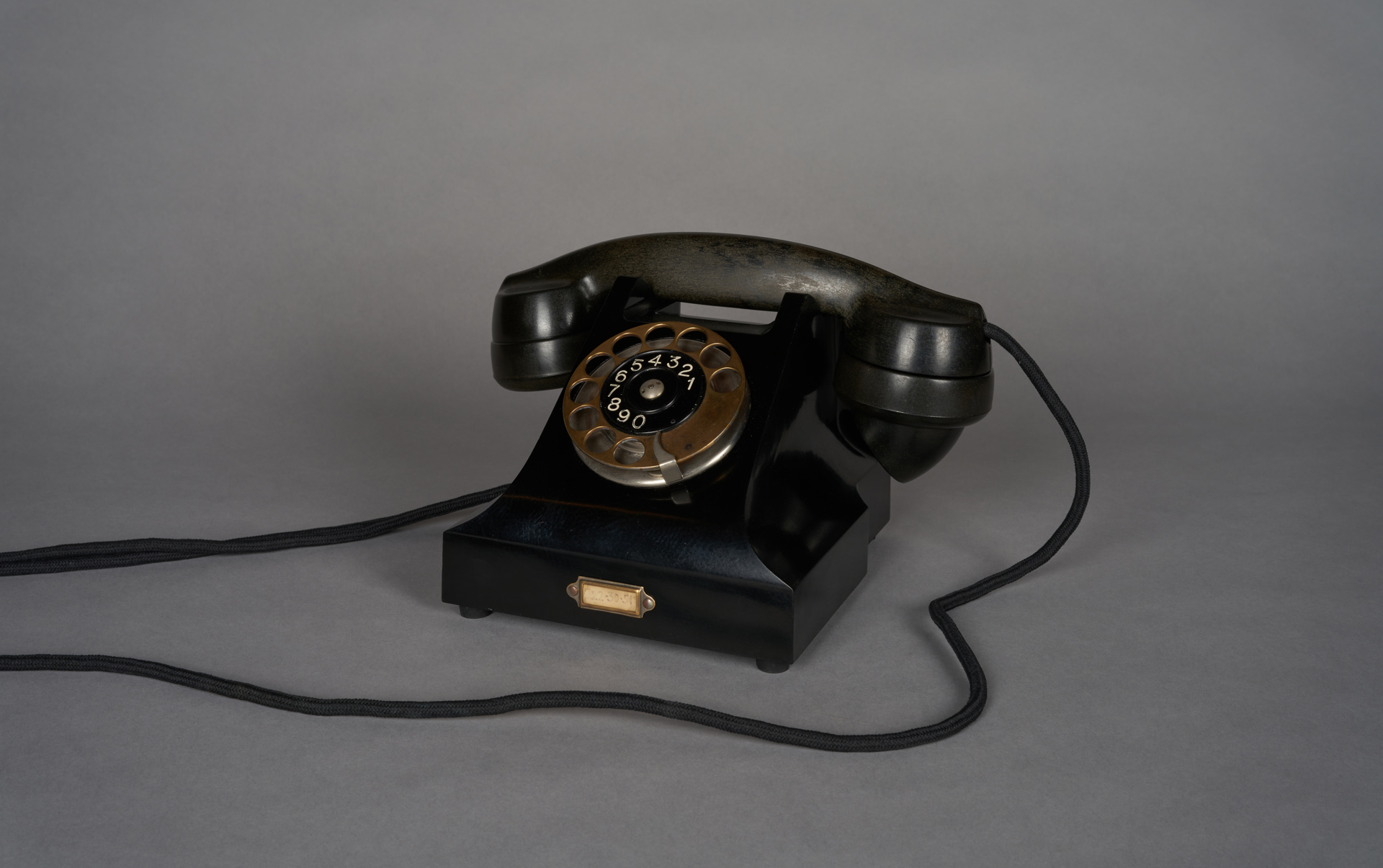
Creator
Ericsson LM, Bjerknes, Johan Christian, Heiberg, Jean
Time and place of creation
Place:
Sweden
The Ericsson DBH 1001 is a telephone manufactured by the Swedish communications company Ericsson in different versions over a period of over 30 years (1931-1962).
When Ericsson’s Bakelite telephone became widespread across the world in the 1930s, it was referred to as the “Swedish telephone type”. The model’s history, however, began elsewhere. In 1931, in Oslo, Norway, engineer Johan Christian Bjerknes and artist and designer Jean Heiberg developed the first Bakelite telephone with a built-in base, dialler, and bell. The design of the lightweight (weighing around 3 kg) and relatively small device (it could be held in one hand) set a new standard for plastic telephones. It went into mass production and became popular thanks to three entities: Elektrisk Bureau (a Norwegian company acquired by LM Ericsson in 1928), Telegrafverket (a Swedish state-owned company responsible for nationwide telecommunication), and Ericsson LM.
For telephone manufacturers, going from wood to Bakelite was nothing short of a revolution. The time needed to build the housing was reduced from a week to around seven minutes. Bakelite presented itself as the perfect material for making telephones – it was glossy, easily formed, and did not absorb humidity. Its only disadvantage was that, for technical reasons, it only allowed production of objects in black.
The innovative telephone design made the collaboration between LM Ericsson and Telegrafverket even closer. From 1933, the Ericsson DBH 1001 telephone became a standard in Swedish telecommunications. The device was also exported – it was ordered in enormous quantities by the British Royal Mail, among others.
Ericsson telephones were also used in Poland in the inter-war period. The tremendously popular DBH 1001 was manufactured in Poland (under the licenced name DC1PL1) by Polska Akcyjna Spółka Elektryczna Ericsson (PASE Ericsson), which operated from 1924. Initially the company imported complete devices from Sweden. In 1936 PASE Ericsson acquired the Śląska Fabryka Telefonów w Wełnowcu (now a district of Katowice), and two years later it built a factory in Radom (with government support, as part of the Central Industrial Area project), where it moved its entire production which continued until the outbreak of World War II. On February 11th, 1948, the nationalised factory was renamed Zakłady Wytwórcze Aparatury Teletechnicznej, which marked the start of Polish telephone production.
Creator
Ericsson LM, Bjerknes, Johan Christian, Heiberg, Jean
Time and place of creation
Place:
Sweden











